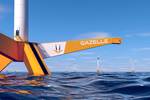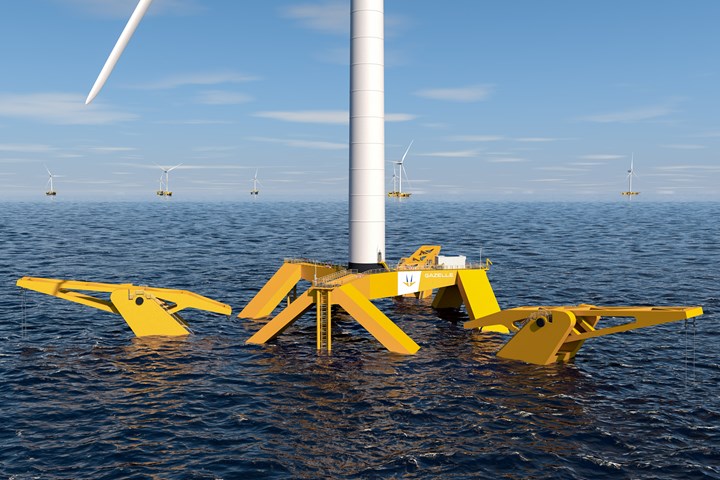Gazelle Wind Power unveils third-generation floating offshore wind platform
On top of reducing cost and taking advantage of pre-existing infrastructure, the enhanced, modular design incorporates a dynamic mooring system and geometry that minimizes environmental impact.
Gazelle Wind Power (Dublin, Ireland), the developer of a modular floating offshore wind platform, unveiled third-generation technology at WindEurope 2023 in Copenhagen, Denmark. The company’s enhanced design further refines Gazelle’s solution to address the primary challenges facing the offshore wind industry — such as cost, supply chain bottlenecks and sustainability — by providing a lightweight, cheaper design that minimizes the impact on fragile marine environments while using existing port infrastructure.
As a third-generation technology, the platform is said to deliver enhanced mooring innovation that enables serial production. Gazelle Wind Power claims that the platform makes first-generation technology — which was primarily designed to float and survive harsh ocean conditions — obsolete, and improves on second-generation designs that are focused on industrialization. Gazelle’s platform moves away from stationary, heavy and bulky models that are difficult to assemble and transport, while reducing costs by 30% compared to conventional semi-submersible designs. Part of this improvement comes from the reduction in steel versus traditional offshore platforms. For example, a 1-GW offshore wind farm using Gazelle’s solution would save 71 kt of steel and reduce emissions of approximately 100 kt of CO2.
Moreover, the company’s platform can be quickly and simply installed at project sites because it requires no specialist cranes or vessels. This is thanks to a cost-effective, innovative design using globally available components and a modular assembly process.
The platform’s geometry provides reduced draft in port, which means it floats higher in the water enabling the use of shallow ports with high stability in towing and wet storage. Pivoting arms enable the platform to move with the wind, waves and tides that result in lower forces, allowinf for a lighter — and therefore cheaper — structure.
The Gazelle platform also uses a dynamic mooring system, shifting away from an active ballast and instead to a natural, passive system that balances forces and motions through a counterweight, keeping the turbine pitch low and improving operational efficiency. Vertical mooring lines attached to the pivoting arms reduce the platform’s environmental footprint by minimizing impact and allowing for a 75% reduction in mooring length when compared to semi-submersibles with catenary mooring in depths of 100 m or more.
“Through industrial innovation, the platform components can be adjusted to accommodate all forecasted offshore wind turbine sizes, including the current 15 MW or greater capacities,” Gazelle CTO Jason Wormald says. “Additionally, our platform can be produced anywhere in the world, supporting job creation through regionalized manufacturing.”
Related Content
-
Forvia brand Faurecia exhibits XL CGH2 tank, cryogenic LH2 storage solution for heavy-duty trucks
Part of its full hydrogen solutions portfolio at IAA Transportation 2022, Faurecia also highlighted sustainable thermoplastic tanks and smart tanks for better safety via structural integrity monitoring.
-
Paris Air Show 2023 highlights
The Paris Air Show, one of the largest aerospace trade shows in the world, returned for the first time since 2019 and proved that the global aviation industry industry is very much alive and kicking.
-
Materials & Processes: Fibers for composites
The structural properties of composite materials are derived primarily from the fiber reinforcement. Fiber types, their manufacture, their uses and the end-market applications in which they find most use are described.

















